Strange and Familiar, Barbican | reviews, news & interviews
Strange and Familiar, Barbican
Strange and Familiar, Barbican
A fascinating view from without: world photographers on British identity
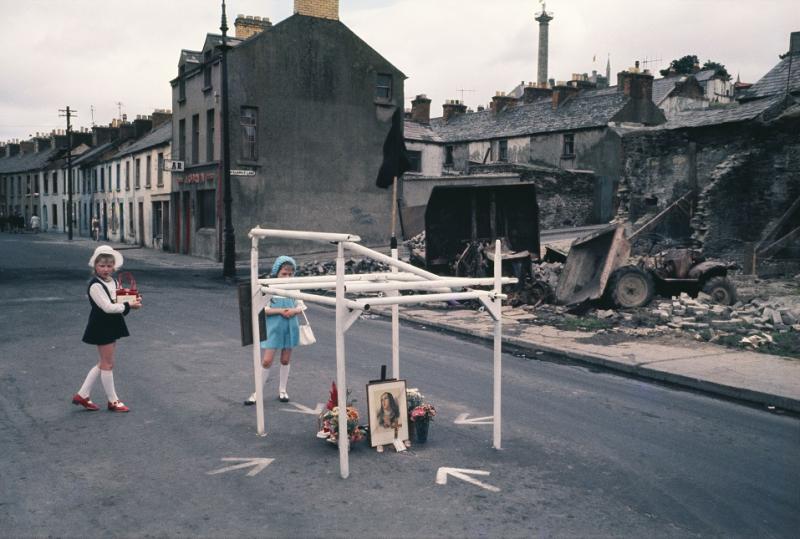
The Barbican has built a steady reputation for almost unclassifiable large-scale art exhibitions, particularly in architecture, design and photography: they have been underestimated pioneers, often working in areas themselves under-scrutinised. Thus they often manage to surprise, and so it is here.
This vast anthology is subtitled “Britain as Revealed by International Photographers”, and has been assembled under the aegis of Martin Parr, the highly successful photographer of the banalities of British life. It looks through the eyes of 23 foreigners, including five women, at the last eight decades or so of general carry-on in this idiosyncratic, socially volatile, and highly individual island – with a couple of nods to Ireland north and south. The photographers come from all over: Japan, America North and South, Europe. After the US, the largest contingents are from Holland and Germany.
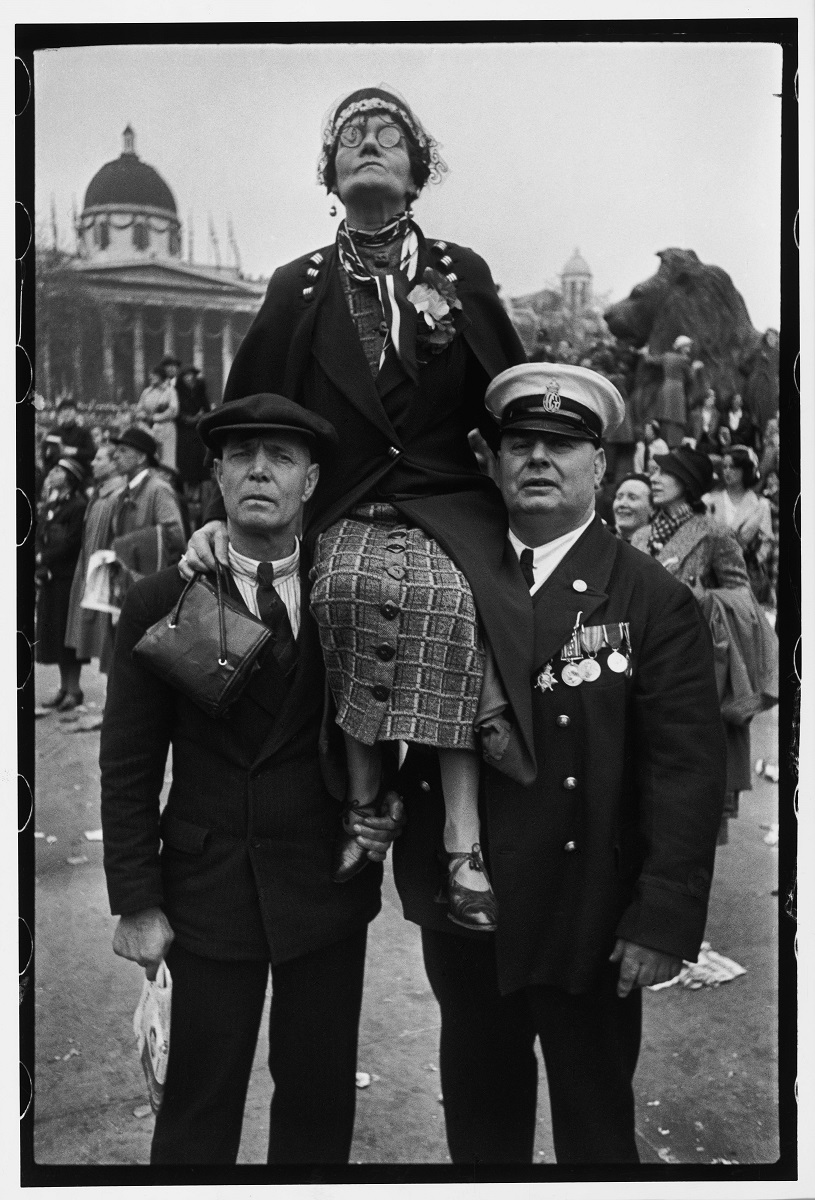 The camera, Parr remarks in the catalogue, turns a moment into an image that can last forever. Visitors, he also notes, often go for the clichés, but some of the clichés have vanished: where are the bowler hats of yesteryear now? The miners are now almost as extinct as the dodo, yet some things persist, from the City to the Season – and the slums.
The camera, Parr remarks in the catalogue, turns a moment into an image that can last forever. Visitors, he also notes, often go for the clichés, but some of the clichés have vanished: where are the bowler hats of yesteryear now? The miners are now almost as extinct as the dodo, yet some things persist, from the City to the Season – and the slums.
It is an eye-opener in many more ways than one, the eyes of strangers in a strange land, whether they come on assignment as reporters or documentarians, or are self-propelled and -motivated. How others see us is unsettling, through the prism of their cultures, looking at us as though we were specimens, at times almost as if viewed from outer space. Certainly many images retain the ability to shock. Bruce Davidson’s Girl with a Kitten, 1962, is still both beautiful and appalling. The adolescent looks terribly poor – where is she exactly? What time of day is it, why is she carrying her bedroll? Is she homeless, is the kitten a stray or her pet? Will she care for it, or is something perhaps sadder or more sinister at work? Is she a stray herself? In 2007 the American photographer described its genesis, an accidental meeting in London on the street with some teenagers, and called it his best shot.
Parr himself is not only a collector but a scholar, having produced (with Gerry Badger) a three-volume study of the Photobook, pertinent to this huge compilation, as most of those whose work is on view have also published their penetrating, unexpected and at times devastating views of our foreign country, often with accompanying texts. Almost all the photographers have more than transcended clichés – indeed the paradox is that in many instances their portfolios themselves would become images of Britain. When Henri Cartier-Bresson worked the crowds thronging the Mall at the 1937 Coronation of George VI, the man who did not want to be king, he caught their eccentric, passionate and quirky enthusiasm (Coronation of King George VI, Trafalgar Square, London, 12 May 1937, pictured above right). The result is irresistible without being quaint or whimsical, typically Cartier-Bresson (although we do not associate him with crowd scenes).
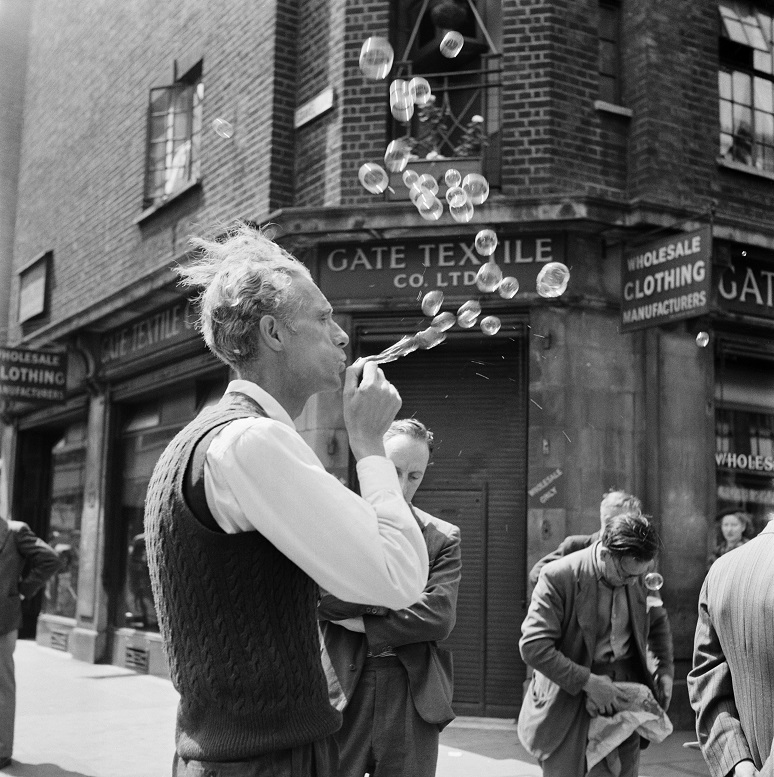 The Swiss-American Robert Frank, famed for his definitive study of Americans – some of the most subtly searing analyses of society, still pertinent – turned his incisive eye on Britain in the 1950s. Here, from the early years of that decade, is a misty, empty street of terraced houses, a girl skipping on the pavement, at the right hand edge just the tail-end of a hearse, its door open and awaiting its load: evocative, elegiac, we wonder what lives are led behind the impassive street façades. This was, we are told, a Britain haunted still by the war, and deprivation, though expressed in a strange beauty caught by an incisive eye. (Cas Oorthuys, London, 1953, pictured above left.)
The Swiss-American Robert Frank, famed for his definitive study of Americans – some of the most subtly searing analyses of society, still pertinent – turned his incisive eye on Britain in the 1950s. Here, from the early years of that decade, is a misty, empty street of terraced houses, a girl skipping on the pavement, at the right hand edge just the tail-end of a hearse, its door open and awaiting its load: evocative, elegiac, we wonder what lives are led behind the impassive street façades. This was, we are told, a Britain haunted still by the war, and deprivation, though expressed in a strange beauty caught by an incisive eye. (Cas Oorthuys, London, 1953, pictured above left.)
The Austrian Edith Tudor-Hart née Suschitzky, committed communist and spy, was also a profoundly gifted photographer. Juxtaposed here is a 1937 view of a poodle parlour (the poodle in question, being conscientiously blow-dried by two human attendants, is actually a bulldog), next to it a smiling family in the slums crowded into a tiny outdoor space – six children, two mothers, and a line of washing in a dour brick-walled outdoor cubicle (Gee Street, Finsbury, London, c.1936, pictured below right). There is a wonderful selection from Paul Strand’s poignant, thoughtful, dignified 1954 study of the Hebridean islands, their people, their landscape.
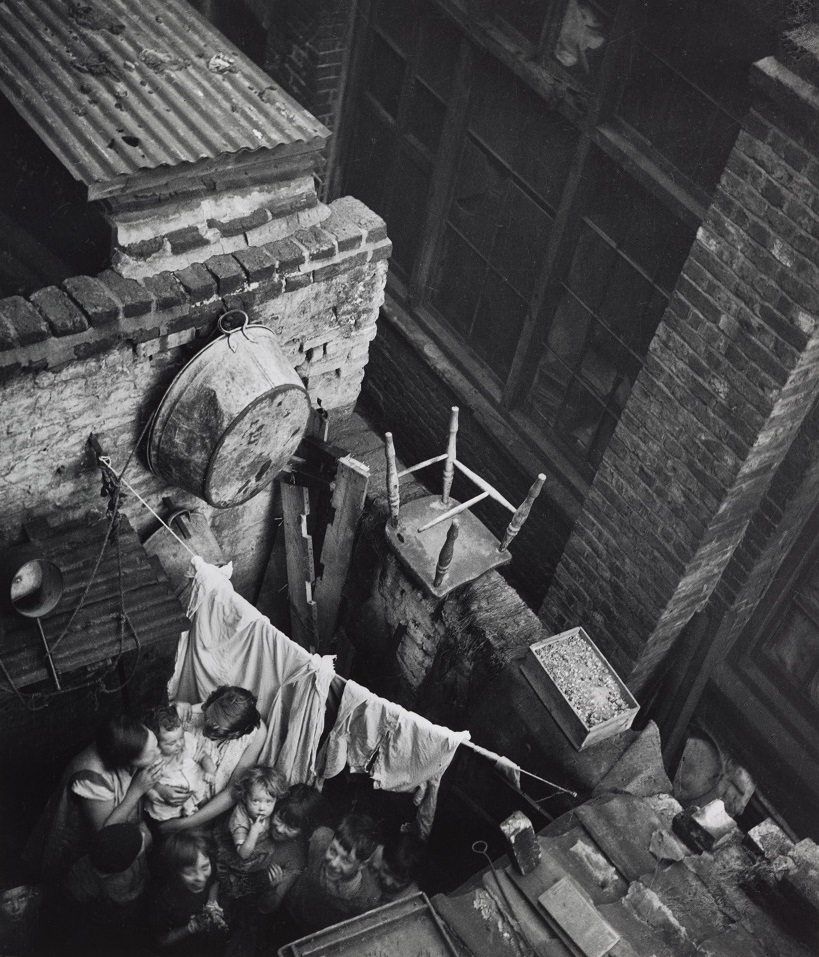 There is Wales, its miners and villages, in black and white from Robert Frank, and in soft and melancholy colour from Bruce Davidson, both subtly savage in depictions of communities quietly suffering for reasons beyond any individual control. Here is 1960s London: a Rolling Stones concert in Hyde Park, the crowd caught by Frank Habicht, part of his exploration of the “scene” capturing the world’s attention, swinging London. The Japanese Alihiko Okamura shows us the terrible Troubles in Northern Ireland, including a blood-spattered pavement, festooned with flowers the day after the Battle of the Bogside. There is unexpected hilarity, too. A massive slideshow of hundreds of images of people of all ages and sizes is linked together in the Dutchman Hans Eijkelboom’s foray into shopping malls by the similarities of their T-shirts and hoodies, slogans and patterns of astonishing variety within a single motif, from skulls to flowers.
There is Wales, its miners and villages, in black and white from Robert Frank, and in soft and melancholy colour from Bruce Davidson, both subtly savage in depictions of communities quietly suffering for reasons beyond any individual control. Here is 1960s London: a Rolling Stones concert in Hyde Park, the crowd caught by Frank Habicht, part of his exploration of the “scene” capturing the world’s attention, swinging London. The Japanese Alihiko Okamura shows us the terrible Troubles in Northern Ireland, including a blood-spattered pavement, festooned with flowers the day after the Battle of the Bogside. There is unexpected hilarity, too. A massive slideshow of hundreds of images of people of all ages and sizes is linked together in the Dutchman Hans Eijkelboom’s foray into shopping malls by the similarities of their T-shirts and hoodies, slogans and patterns of astonishing variety within a single motif, from skulls to flowers.
There are those who visited, or who passed through on the way to somewhere else; but there is also a significant core of migrants and refugees, foreigners who settled, and who equally significantly influenced the cultural climate of Britain. Strange and Familiar may not be the first time we have seen such memorable individual visual essays by outsiders recently: in 2012, Tate Britain showed Another London from the Franck collection, through the eyes of 41 foreigners looking at London from 1930 to 1980, again presented through such a double spectrum. But even if it is a tale oft-told, it is one that cannot be told too often.
- Strange and Familiar: Britain as Revealed by International Photographers at Barbican Art Gallery to 19 June; then Manchester Art Gallery 25 November-29 May 2017
Gallery, below: click on thumb-nails to begin
 (From left) Tina Barney, Frank Habicht, Raymond Depardon, Bruce Gilden, Martin Parr, Jim Dow, Hans Eijkelboom © Tristan Fewings/Getty Images
(From left) Tina Barney, Frank Habicht, Raymond Depardon, Bruce Gilden, Martin Parr, Jim Dow, Hans Eijkelboom © Tristan Fewings/Getty Images
rating
Share this article
The future of Arts Journalism
You can stop theartsdesk.com closing!
We urgently need financing to survive. Our fundraising drive has thus far raised £49,000 but we need to reach £100,000 or we will be forced to close. Please contribute here: https://gofund.me/c3f6033d
And if you can forward this information to anyone who might assist, we’d be grateful.

Subscribe to theartsdesk.com
Thank you for continuing to read our work on theartsdesk.com. For unlimited access to every article in its entirety, including our archive of more than 15,000 pieces, we're asking for £5 per month or £40 per year. We feel it's a very good deal, and hope you do too.
To take a subscription now simply click here.
And if you're looking for that extra gift for a friend or family member, why not treat them to a theartsdesk.com gift subscription?
more Visual arts
 'We are bowled over!' Thank you for your messages of love and support
Much-appreciated words of commendation from readers and the cultural community
'We are bowled over!' Thank you for your messages of love and support
Much-appreciated words of commendation from readers and the cultural community
 Lee Miller, Tate Britain review - an extraordinary career that remains an enigma
Fashion photographer, artist or war reporter; will the real Lee Miller please step forward?
Lee Miller, Tate Britain review - an extraordinary career that remains an enigma
Fashion photographer, artist or war reporter; will the real Lee Miller please step forward?
 Kerry James Marshall: The Histories, Royal Academy review - a triumphant celebration of blackness
Room after room of glorious paintings
Kerry James Marshall: The Histories, Royal Academy review - a triumphant celebration of blackness
Room after room of glorious paintings
 Folkestone Triennial 2025 - landscape, seascape, art lovers' escape
Locally rooted festival brings home many but not all global concerns
Folkestone Triennial 2025 - landscape, seascape, art lovers' escape
Locally rooted festival brings home many but not all global concerns
 Sir Brian Clarke (1953-2025) - a personal tribute
Remembering an artist with a gift for the transcendent
Sir Brian Clarke (1953-2025) - a personal tribute
Remembering an artist with a gift for the transcendent
 Emily Kam Kngwarray, Tate Modern review - glimpses of another world
Pictures that are an affirmation of belonging
Emily Kam Kngwarray, Tate Modern review - glimpses of another world
Pictures that are an affirmation of belonging
 Kiefer / Van Gogh, Royal Academy review - a pairing of opposites
Small scale intensity meets large scale melodrama
Kiefer / Van Gogh, Royal Academy review - a pairing of opposites
Small scale intensity meets large scale melodrama
 Jenny Saville: The Anatomy of Painting, National Portrait Gallery review - a protégé losing her way
A brilliant painter in search of a worthwhile subject
Jenny Saville: The Anatomy of Painting, National Portrait Gallery review - a protégé losing her way
A brilliant painter in search of a worthwhile subject
 Abstract Erotic, Courtauld Gallery review - sculpture that is sensuous, funny and subversive
Testing the boundaries of good taste, and winning
Abstract Erotic, Courtauld Gallery review - sculpture that is sensuous, funny and subversive
Testing the boundaries of good taste, and winning
 Edward Burra, Tate Britain review - watercolour made mainstream
Social satire with a nasty bite
Edward Burra, Tate Britain review - watercolour made mainstream
Social satire with a nasty bite
 Ithell Colquhoun, Tate Britain review - revelations of a weird and wonderful world
Emanations from the unconscious
Ithell Colquhoun, Tate Britain review - revelations of a weird and wonderful world
Emanations from the unconscious
 Rachel Jones: Gated Canyons, Dulwich Picture Gallery review - teeth with a real bite
Mouths have never looked so good
Rachel Jones: Gated Canyons, Dulwich Picture Gallery review - teeth with a real bite
Mouths have never looked so good



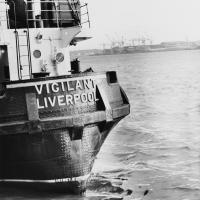



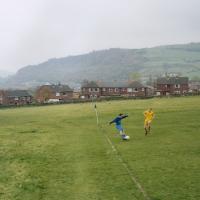
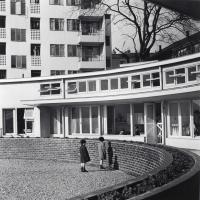
Add comment